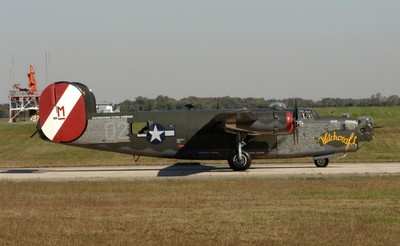What Lies Beneath
Researchers from the University of Delaware and the U.S. military have discovered no fewer than five B-24 Liberator bombers in the Adriatic Sea—the body of water separating Italy’s east coast from the west coasts of Slovenia, Croatia, Bosnia and Herzegovina, Montenegro, Albania, and Greece.

The aircraft were lost while returning from bombing missions over Italy, plunging into the Adriatic’s relatively warm depths after sustaining damage from Axis fighters and anti-aircraft installations.
The lost bombers are linked to at least 23 Allied aviators declared missing in action during the Second World War.
Researchers from the University of Delaware and the U.S. Defense POW/MIA Accounting Agency (DPAA) located the bombers in August 2022 during a two-week exploratory mission comprising Croatian archaeologists, scientists, divers, and military personnel. DPAA, which travels the globe for purpose of determining the fates of servicemen declared Prisoners Of War (POW) or Missing In Action (MIA) sponsored the undertaking
The search was predicated largely upon data gleaned by Autonomous Underwater Vehicles (AUVs)—cylindrical, unmanned contraptions that methodically combed a 24-square-mile expanse of the Adriatic’s sea-bed for possible aircraft wreckage. Using side-scan-sonar, the AUV’s generated a preponderance of images and data which—in conjunction with additional data and images furnished by magnetometers and high-resolution video cameras—led researchers to the downed B-24s.

As promising leads were discovered, human divers were dispatched to further investigate and—if applicable—verify the presence of aircraft wreckage.
Of the five bombers located, three were positively identified from WWII service records. The three verified aircraft were collectively associated with 23 aircrew-members listed as missing in action. The identification of the wrecks allows the status of the decedents to be redesignated from Missing In Action (MIA) to Killed In Action (KIA), and brings a degree of closure to the descendants of the lost aviators.
Designed by San-Diego-based Consolidated Aircraft, the B-24 Liberator was a four-engined, American heavy bomber procured in huge numbers for a wide variety of combat roles. Approximately 18,500 specimens were produced between 1939 and 1945—including 8,685 units built under license by the Ford Motor Company.
Highly-recognizable by dint of its uniquely-efficient, shoulder-mounted, high aspect-ratio Davis wing, twin-ovular-vertical-stabilizer/rudder (“H”-tail) empennage, and acrylic nose-section, the B-24 served in every branch of the American armed forces, as well as numerous Allied air corps and navies. The machine saw action in the entirety of the Second World War’s operational theaters, and along with Boeing’s B-17 Flying Fortress, was the mainstay of the United States’ strategic bombing campaign in the Western European theater.
Owing to its superb range and power—borne of the aforementioned Davis wing and a quartet of supercharged Pratt & Whitney R-1830-35 Twin Wasp engines—the B-24 proved eminently useful in South Pacific operations, including the bombing of Japan. What’s more, long-range anti-submarine Liberators proved instrumental in closing the Mid-Atlantic gap—an undefended area beyond the reach of land-based Royal Air Force (RAF) antisubmarine (A/S) aircraft in which innumerable Allied merchant ships were lost Axis U-boats.
Consolidated test pilot Lindell Hendrix claimed a lightly-loaded B-24 could out-turn Lockheed’s storied P-38 Lightning.
The B-24 was the first American bomber to feature a tricycle undercarriage. Regrettably, the Liberator lacked nosewheel-steering. Ergo, control of the B-24 during ground operations was limited solely to asymmetric thrust and differential braking.
The B-24 Liberator has the distinctions of being history’s most-produced bomber, history’s most produced multi-engine airplane, and America’s most-produced military aircraft.
 Aero-News: Quote of the Day (05.09.24)
Aero-News: Quote of the Day (05.09.24) ANN's Daily Aero-Term (05.09.24): Hold Procedure
ANN's Daily Aero-Term (05.09.24): Hold Procedure ANN's Daily Aero-Linx (05.09.24)
ANN's Daily Aero-Linx (05.09.24) Airborne 05.03.24: Advanced Powerplant Solutions, PRA Runway Woes, Drone Racing
Airborne 05.03.24: Advanced Powerplant Solutions, PRA Runway Woes, Drone Racing Airborne-NextGen 05.07.24: AI-Piloted F-16, AgEagle, 1st 2 WorldView Sats
Airborne-NextGen 05.07.24: AI-Piloted F-16, AgEagle, 1st 2 WorldView Sats




